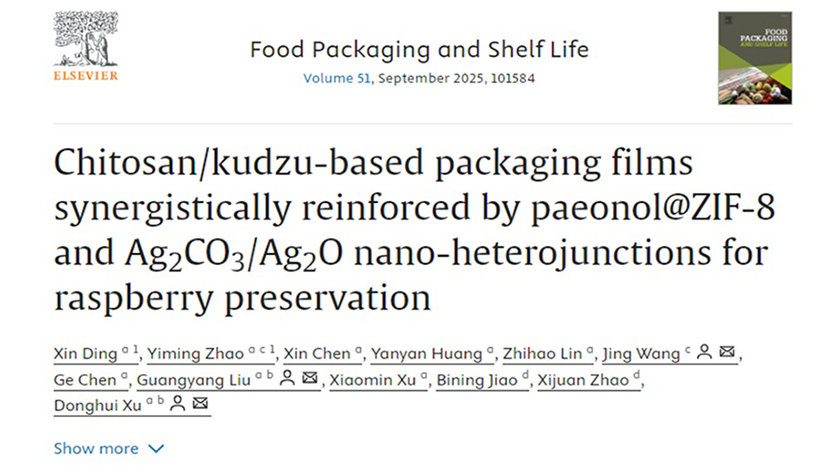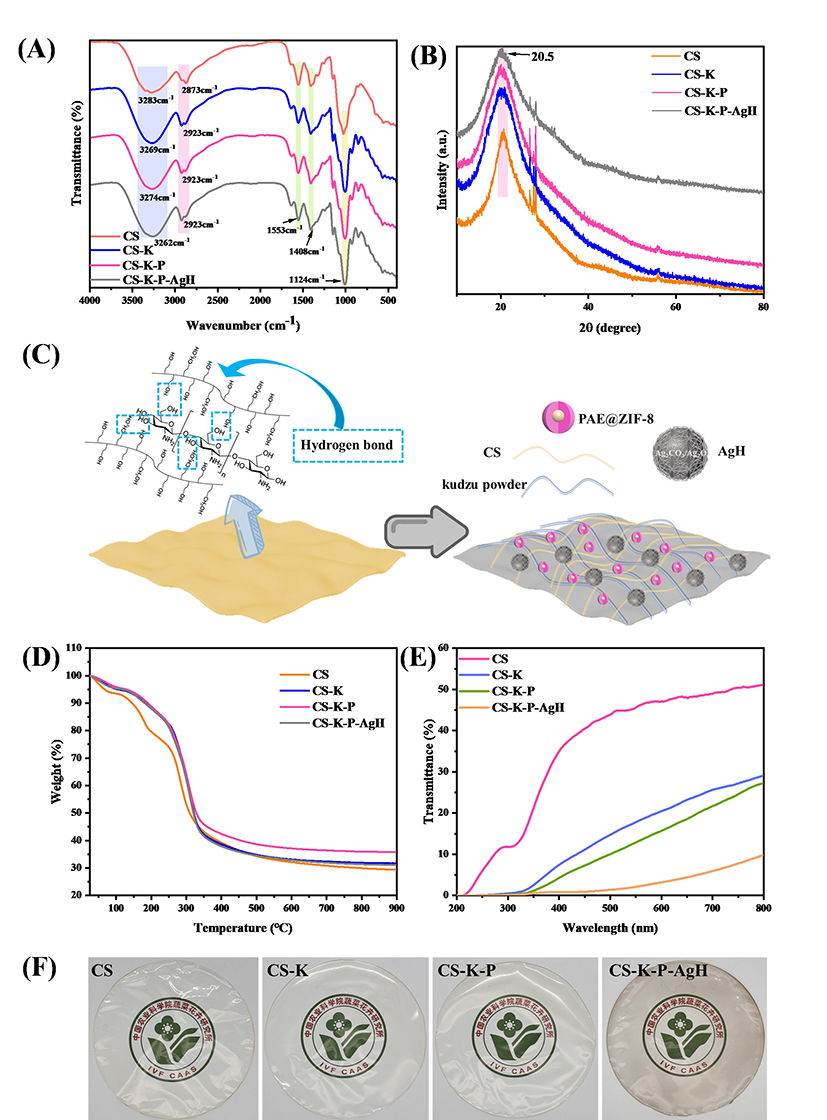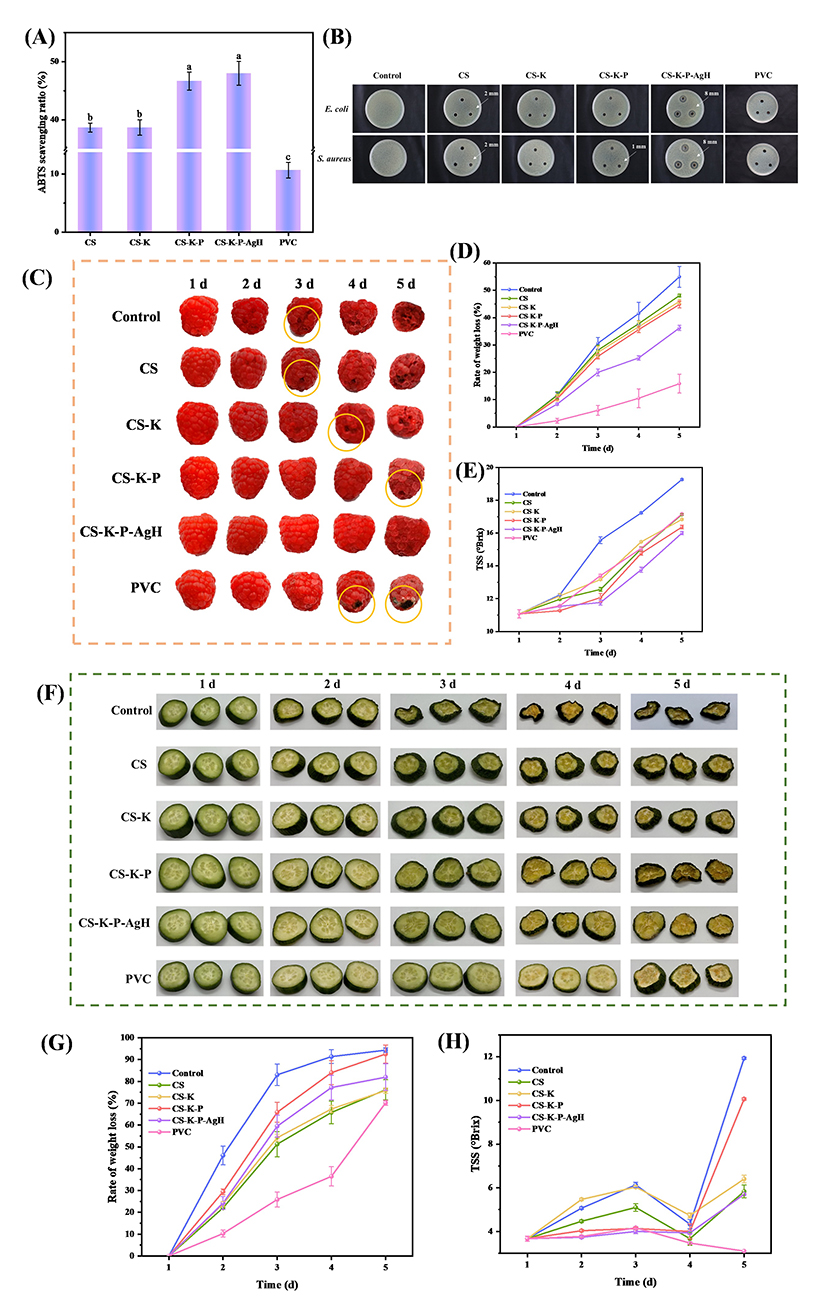Recently, the Quality and Safety Research Group at the Institute of Vegetables and Flowers, Chinese Academy of Agricultural Sciences (CAAS), made new progress in the design and preparation of novel polysaccharide-based nanocomposite films for preserving the quality of raspberries and fresh-cut cucumbers. The related research findings were published in Food Packaging and Shelf Life (IF: 10.6) under the title: “Chitosan/kudzu-based packaging films synergistically reinforced by paeonol@ZIF-8 and Ag2CO3/Ag2O nano-heterojunctions for raspberry preservation”.

In this study, PAE@ZIF-8 and AgH were dispersed in a chitosan/kudzu starch film matrix to prepare novel polysaccharide-based nanocomposite films through the solution casting method. The microstructure and formation mechanism of PAE@ZIF-8, AgH, and the nanocomposite films were characterized using SEM, EDS, zeta potential analysis, FT-IR, XRD, and XPS. Release experiments were conducted to investigate the release behavior and kinetic models of PAE@ZIF-8 in different environmental media. The films' properties were systematically evaluated, including thermal stability (TGA), water contact angle, moisture content, water vapor permeability, mechanical properties, UV-blocking capability, and antioxidant activity. For antimicrobial assessment, the antibacterial efficacy was tested against Escherichia coli (representing Gram-negative bacteria) and Staphylococcus aureus (representing Gram-positive bacteria). Preservation performance and quality maintenance were evaluated using raspberries and fresh-cut cucumbers as model produce.

Fig.1 Structural characterization of polysaccharide nanocomposite films and product presentation.
The nanocomposite film exhibited pH-responsive release properties in acidic spoilage environments, with the release behavior of paeonol following a first-order kinetic model. The addition of kudzu starch significantly improved the morphological structure of the chitosan film, while the incorporation of two nanomaterials - PAE@ZIF-8 and AgH - increased surface roughness and demonstrated uniform dispersion within the film matrix. The composite film showed remarkable enhancements in tensile strength, elongation at break, UV-blocking capacity, and antioxidant properties. Under ambient temperature and humidity conditions, the film effectively preserved raspberries and fresh-cut cucumbers for five days without noticeable mold growth or spoilage. The migration levels of zinc and silver ions complied with EU food safety regulations. Furthermore, the film exhibited excellent biodegradability and biosafety, showing no adverse effects on seed germination or plant growth. This study provided valuable insights into the design and development of polysaccharide-based nanocomposite films and offered new perspectives for advancing nanotechnology applications in horticultural product preservation.

Fig.2 The antibacterial and preservation properties of polysaccharide nanocomposite films.
Institute of Vegetables and Flowers, Chinese Academy of Agricultural Sciences (CAAS) is the first unit to complete the paper. M.S. student Xin Ding and Ph.D. student Yiming Zhao are the co-first authors of the paper. Research Fellow Donghui Xu, Research Fellow Jing Wang (Institute of Agricultural Quality Standards and Testing Technology) and Research Fellow Guangyang Liu are the co-corresponding authors. This research was conducted based on the National Key Laboratory of Vegetable Biotechnology and the Key Laboratory of Vegetable Quality and Safety Control of the Ministry of Agriculture and Rural Affairs. It received funding from the National Key Research and Development Program, the National Major Vegetable Industry Technology System, the Beijing Municipal Science and Technology Fund, and the Agricultural Science and Technology Innovation Project of the Chinese Academy of Agricultural Sciences.
Web site of the paper: https://www.sciencedirect.com/science/article/pii/S2214289425001541